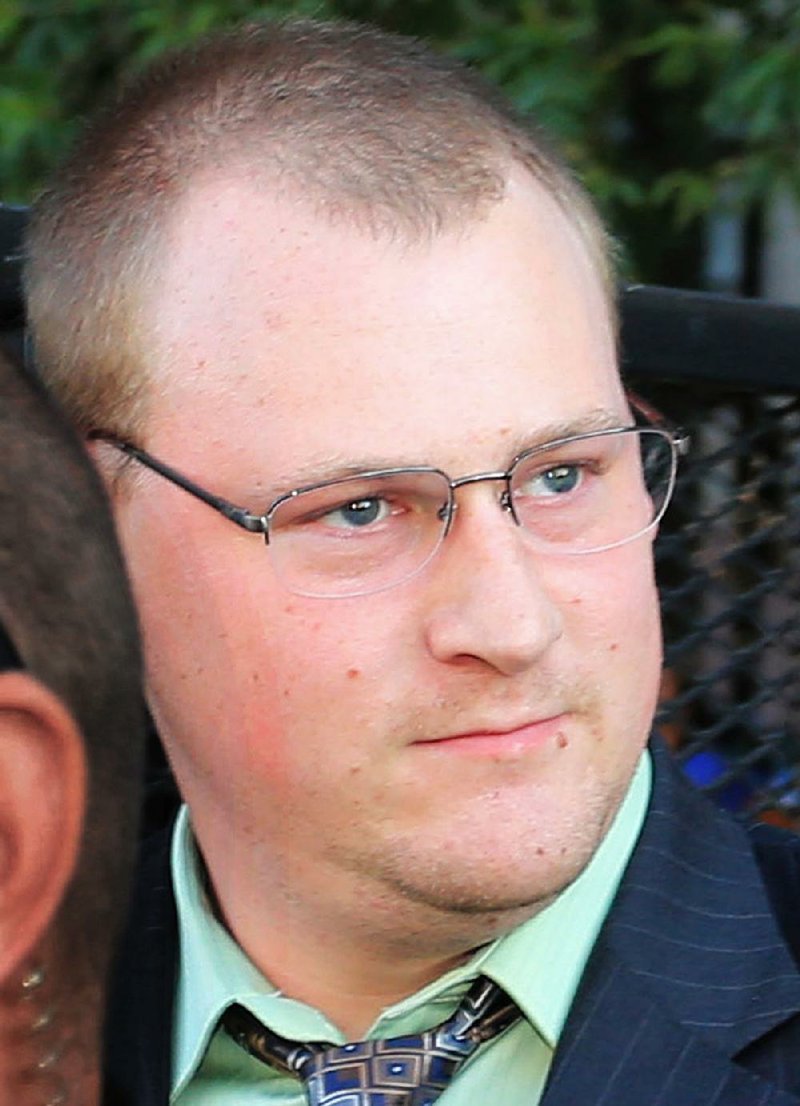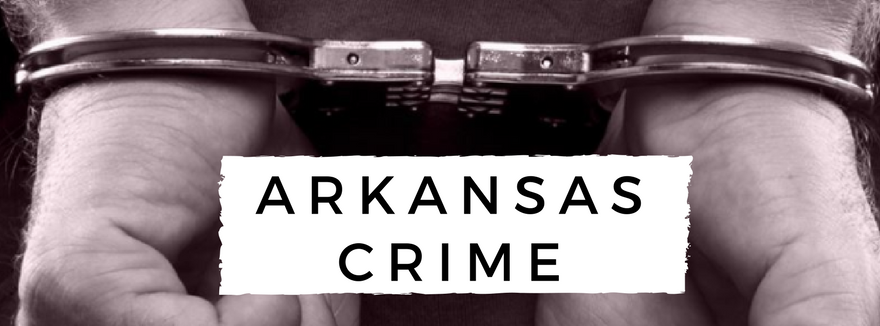The presiding judge in the civil trial against a former Little Rock police officer who killed a teen burglary suspect in 2012 told attorneys he wanted to know what led the two to that point.
Chief U.S. District Judge Brian Miller first weighed whether to allow the juvenile court records of Bobby Moore III, a 15-year-old who was fatally shot Aug. 12, 2012, by then-officer Josh Hastings at the Shadow Lake Apartments, 13111 W. Markham St.
Josh Hastings criminal trials end in hung juries
• SEPT. 26, 2013: Hastings jury says it's deadlocked; judge declares mistrial
• JUNE 23, 2013: Hung jury mistrial for ex-Little Rock officer
• Photo gallery (larger versions)
• SEPT. 26, 2013: Hastings jury says it's deadlocked; judge declares mistrial
• JUNE 23, 2013: Hung jury mistrial for ex-Little Rock officer
• Photo gallery (larger versions)
Later, Miller took up whether to allow testimony from Little Rock police officer Corey Hall, a former sergeant who oversaw Hastings in 2008. Mike Laux, an attorney for Moore's mother, Sylvia Perkins, said Hall would show that Hastings, the son of a police captain, had "special favors" that affected his state of mind during the shooting.
Miller said he would allow Hall's testimony only if it centered on the special treatment or the circumstances that led up to the slaying. Jurors were not present for either discussion.
"I think this works both ways here," Miller said. "If we're talking about how Mr. Hastings got here, we have to tell how Mr. Moore got here."
Perkins filed a wrongful-death lawsuit against Hastings, the city of Little Rock and the Police Department's former chief, Stuart Thomas, in 2015, though Hastings is now the sole defendant. Hastings has been criminally tried in Pulaski County Circuit Court, but juries deadlocked both times. The prosecutor decided against a third criminal trial.
On Wednesday, Miller did not make a ruling whether to allow the juvenile court records, Hastings' attorney Keith Wren said. Wren wanted to introduce the records in response to one of Laux's witnesses reporting on the loss of the teen's earning potential and "loss to society."
The second day of the trial before a jury, Wednesday brought testimonies from an associate medical examiner, two Little Rock police officers, a former Little Rock homicide detective and a former resident of the apartment complex.
Several of the witnesses talked about the day of the shooting, their roles and what they believed happened.
Hastings fatally shot Moore, who was driving a Honda Civic, during an investigation of car break-ins. At issue have been the direction the car traveled -- backward or forward -- and its speed. Hastings has said in statements to the Little Rock Police Department that he was standing near a Dumpster with rocks at his back. The rocks were on a small embankment.
The car was found more than 100 feet away from the embankment, its front end facing that way and its back end resting against a 2012 Chevrolet Camaro, witnesses said Tuesday.
Lisa Nava-Hall, a Little Rock police officer, said Wednesday that another officer was the first to respond to the scene, and he was later named Hastings' companion officer, those immediately assigned to comfort officers involved in shootings.
Laux asked if she thought it improper for a responding officer to be a companion officer.
"He has effectively nullified [the officer's] testimony by making him a companion officer," he said.
"I didn't see it that way because I knew they were best friends," she said.
She said she checked in with Hastings when she got to the apartment complex and made sure he was OK and had someone with him before cordoning off the scene with police tape.
Kevin Simpson, a former Little Rock police homicide detective who now works in the department's accreditation office, said he got a call at home about the shooting and went to the apartment complex. He spotted three bullet shell casings in front of the Dumpster and a Honda Civic, which had crashed into the Camaro, and then started knocking on doors, including that of former resident Cheryl Eubanks.
Eubanks, who now lives in Oklahoma, said in a video deposition that she had been in bed about 5:15 a.m.
"I heard a loud bang and some doors opening and closing on a car," she said. "It sounded like something hit something."
She lay in bed for a few minutes thinking about the situation, which she said didn't sound normal. She looked out her window twice and saw a car backed into another car. She also spotted one officer standing on the sidewalk and another with a flashlight peering through a car's windshield, she said, adding she did not see officers getting into or reaching into the car.
Simpson wrote down Eubanks' comments in a "neighborhood canvass sheet," he said, but never recorded an interview or wrote a formal statement.
Did he ask if the officers were men, Laux questioned. Did he ask if they were white or black, he continued. Did he ask what they were doing with the car, Laux asked Simpson.
Simpson, who has spent 16 years in the homicide division, said he had not.
"Don't you think that's information you should have followed up on?" Laux asked. "You failed to memorialize that witness's recollection of what she saw."
"I wrote down what she told me," Simpson said, adding that in retrospect, he could have recorded the statement.
"Whose responsibility is it to get information in a homicide investigation -- a witness or a detective?" Laux asked.
"A detective," Simpson said.
Simpson and another former Little Rock police detective had examined the underbelly of the Civic, which led them to believe that Hastings had been dishonest about the car going onto the rocks and accelerating toward him, Simpson said.
Wren, pulling out enlarged photos of the rocks and soil, questioned whether Simpson knew what type each were. He didn't. Pointing to the rocks, Wren asked if Simpson could tell if one moved. He couldn't.
"So you're just guessing, right?" Wren said.
"I don't consider it guessing," Simpson said. "No, sir."
Daniel Dye, the former associate medical examiner for the state Crime Laboratory, said in a video deposition Wednesday that Moore had three gunshot wounds, but that he was only able to recover two bullets. One of the bullets lodged in the Civic.
Moore had a "through-and-through" gunshot wound piercing his left middle finger, a wound on the right side of his chest and the "instantly fatal" shot to the left side of his head, Dye said.
The deposition included autopsy photographs of Moore, prompting Perkins to leave the room. Hastings looked down from the screen showing Moore's body.
Both attorneys shot hypothetical situations to Dye. Wren asked if recoiling from the gunfire could have pushed the car's gearshift from drive to neutral. It could have, Dye said. Wren asked if Moore's body could have come into contact with the gearshift knob. Dye said he didn't know whose blood was on the gearshift and that it was impossible to tell if the blood came from a certain wound.
Hall, once Hastings' supervisor, said he had concerns about Hastings' maturity. He once counseled Hastings, who had received "less than a letter of reprimand" for not activating his dashboard camera, Hall said, adding that the first warning for that offense is verbal.
He did not know that Joshua Hastings was the son of Terry Hastings, a 38-year department veteran who left in 2011 at the rank of captain, Hall said. He also didn't know that Terry Hastings and former Police Chief Stuart Thomas were friends until "a couple of years ago."
Also Wednesday, one of the 12 jurors had an emergency health problem, Miller said. The civil trial can continue with as few as six jurors, he said. The jury of six men and six women was seated Monday afternoon.
The trial continues today at 9 a.m.
Metro on 04/06/2017

